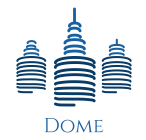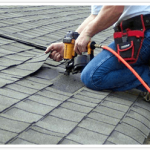

A focal heater or evaporator’s productivity is estimated by yearly fuel use effectiveness (AFUE). The Federal Trade Commission requires new heaters or boilers to show their AFUE so customers can analyze the warming efficiencies of different models. AFUE is a proportion of how proficient the machine is in switching the click here for energy from fuel over completely to warm throughout a commonplace year. In particular, AFUE is the proportion of the heater’s or alternately kettle’s yearly intensity yield contrasted with its all-out yearly petroleum derivative energy consumed. An AFUE of 90% implies that 90% of the energy in the fuel becomes heat for the home and the other 10% departures up the stack and somewhere else. AFUE does exclude the intensity misfortunes of the conduit framework or funneling, which can be essentially as much as 35% of the energy for the result of the heater when pipes are situated in the upper room, carport, or other to some extent molded or unconditioned space. An all-electric heater or kettle has no pipe misfortune through a fireplace. The AFUE rating for an all-electric heater or kettle is somewhere in the range of 95% and 100 percent. The lower values are for units introduced outside since they have more prominent coat heat misfortune. Nonetheless, notwithstanding their high proficiency, the greater expense of power in many pieces of the nation makes every single electric heater or boiler an uneconomic decision. In the event that you are keen on electric warming, consider introducing an intensity siphon framework.
Supplanting Your Furnace or Boiler
- Albeit more seasoned non-renewable energy source heater and kettle frameworks have efficiencies in the scope of 56% to 70%, present-day customary warming frameworks can accomplish efficiencies as high as 98.5%, changing over essentially all the fuel to valuable intensity for your home. Energy effectiveness overhauls and another high-productivity warming framework can frequently cut your fuel bills and your heater’s contamination yield into equal parts.
- Updating your heater or evaporator from 56% to 90% proficiency in a normal cold-environment house will save 1.5 lots of carbon dioxide discharges every year in the event that you heat with petroleum gas, or 2.5 tons assuming you heat with oil. In the event that your heater or kettle is old, broken down, wasteful, or fundamentally larger than usual, the most straightforward arrangement is to supplant it with a cutting-edge high-proficiency model.
- Old coal burners that were exchanged over for oil or gas are prime possibilities for substitution, as well as petroleum gas heaters with pilot lights as opposed to electronic starts. Fresher frameworks might be more proficient however are still liable to be larger than average, and can frequently be altered to decrease their working limit. Prior to purchasing another heater or kettle or changing your current unit, it is recommended that you initially further develop the energy productivity of your home by adding protection as well as new energy-effective windows, then have a warming project worker size your heater.
- Energy-productivity upgrades will get a good deal on another heater or evaporator, in light of the fact that you can buy a more modest unit. An appropriately estimated heater or evaporator will work most effectively, and you’ll need to pick a trustworthy unit and look at the guarantees of every heater or kettle you’re thinking about.
Energy Star
While looking for high-proficiency heaters and boilers, search for the ENERGY STAR® name. In the event that you live in a chilly environment, it typically seems OK to put resources into the most elevated effectiveness framework. In milder environments with lower yearly warming expenses, the additional speculation expected to go from 80% to 90% to 95% proficiency might be difficult to legitimize. In any case, remember that higher effectiveness units will have lower discharges than units in the 80% territory.
Determine a fixed ignition heater or kettle, which will bring outside air straightforwardly into the burner and exhaust vent gases (burning items) straightforwardly to the outside, without the requirement for a draft hood or damper. Heaters and boilers that are not fixed burning units bring warmed air into the unit for ignition and afterward send that air up the smokestack, squandering the energy that was utilized to warm the air. Fixed burning units stay away from that issue and furthermore represent no gamble of bringing perilous ignition gases into your home. In heaters that are not fixed ignition units, back drafting of burning gases can be a major issue.



